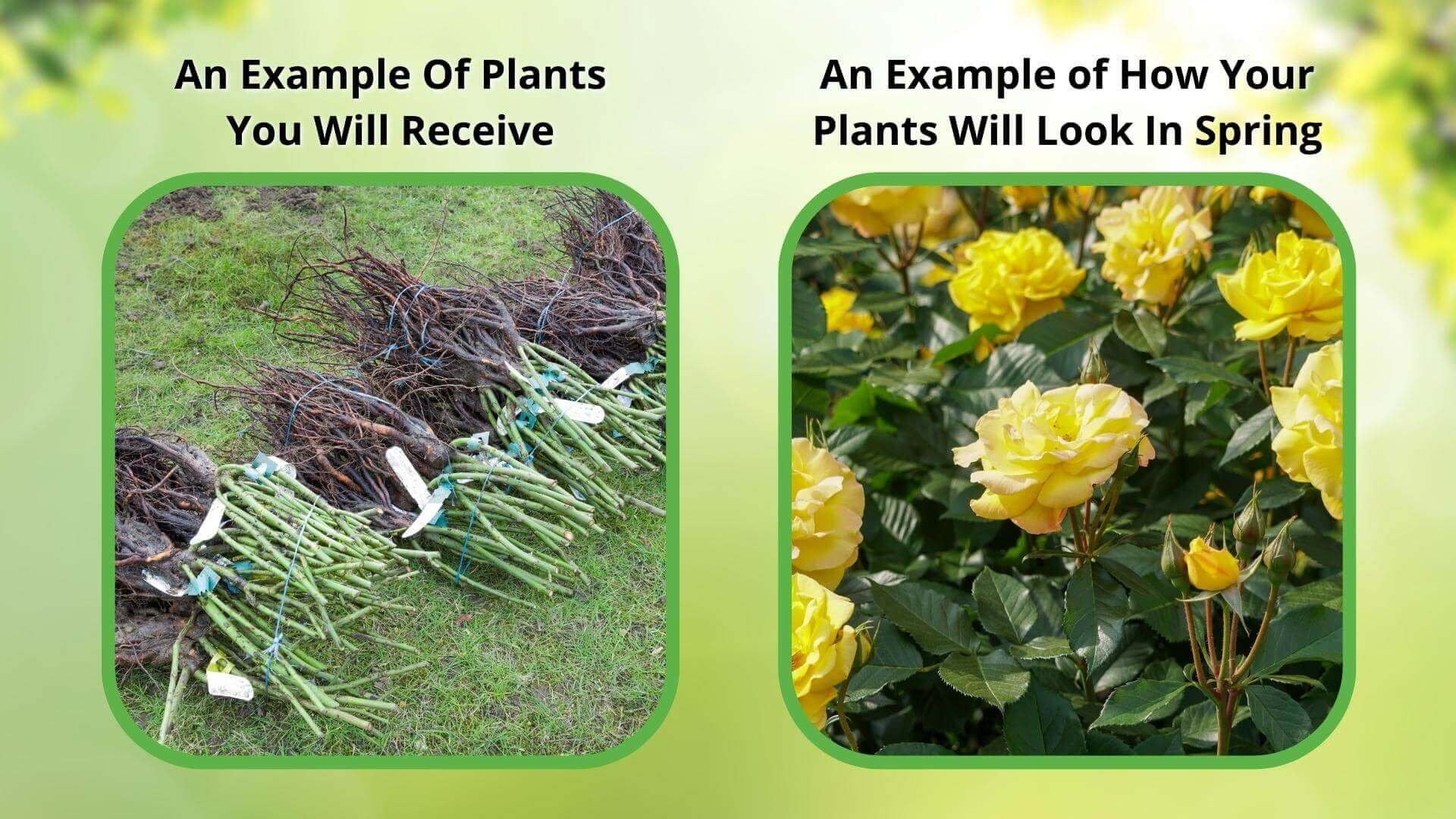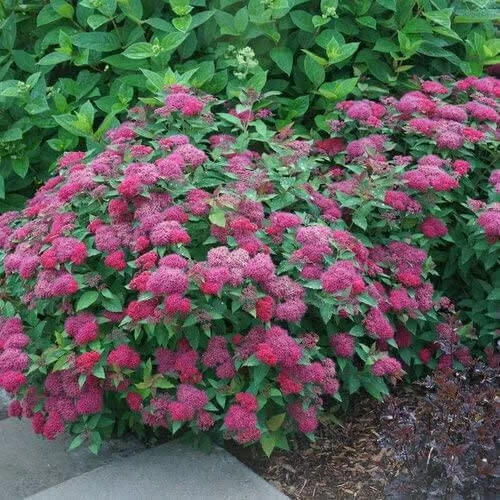
perennial plants
Low maintenance, easy to grow
Attracts butterflies and pollinators
Versatile in various landscape designs
Thrives in
ZONE 4ZONE 5ZONE 6ZONE 7ZONE 8When you add one plant to cart, it automatically adds the second one free on Bogo deals.
Spiraea Japonica offers numerous benefits, enhancing outdoor spaces' visual appeal, versatility, and ecological balance. This deciduous shrub's qualities contribute to various aspects of landscape design.
Grown as a landscape shrub, Spiraea Japonica is known for its beautiful flowers. Depending on the type of bush you buy, you can enjoy having a range of white or pink flowers. Some cultivars can grow quite tall, so you can easily find different sizes of this plant for other locations in your garden.
With this shrub, you can choose spring-blooming or summer-blooming plants. Depending on the variety, the flowers will appear in late spring to early summer. These stunning blooms are in deep pink, ivory-white, and crimson shades. Because of their brilliance, they naturally attract butterflies and bees. Each blossom grows within a cluster of five-petaled flowers.
Thanks to its size and exquisite blooms, this plant is ideal for butterfly gardens. Typically, this bush will grow about 2 to 3 feet high. At full maturity, it can reach 3 to 5 feet wide. A few cultivars can grow 5 to 6 feet high if you want something larger.
Like other members of this genus, the simple leaves grow in an alternate pattern. While the stems are red-brown and brown, the leaves are a vivid shade of green. Usually, the leaves grow ovate with toothed margins. On some cultivars, the stem is hairy.
This bush was initially grown in China, Japan, and Korea. Because of its beauty, it has gradually been adopted by gardeners and landscapers worldwide. It is known for being an incredibly versatile plant, so it is grown in many ecosystems. This bush can be included in a formal landscape design or an eclectic butterfly garden.
You can find cultivars that blossom during different months of the year. Because of this, this stunning plant is the perfect addition to any home garden or commercial landscape. With a little practice, you can start growing a beautiful shrub in your yard.
What are the characteristics of it
It is a midsize deciduous shrub that is colored green with pink, white, or red blooms. It is an excellent choice for hedges, boarders, or mass planting since it is easy to manage and maintain.
How Long Does it Live
Proper care of it can make the plant live for 15 to 20 years or even more. It needs to be pruned and fertilized to keep it healthy and encourage flower production throughout its life.
What is the best fertilizer for it
The ideal fertilizer to use is a slow-release fertilizer. A balanced NPK ratio of 10-10-10 in early spring is advisable for it. On the other hand, the addition of compost or organic matter into the soil is an excellent way to improve nutrient quality for better growth.
Are the roots of it very deep
It is not invasive and has a small root structure. This means it requires frequent watering, especially at times of high temperatures.
Can I Grow One From A Cutting
Yes, they are taken from softwood cuttings from the plant in late spring or early summer. With adequate care and the use of rooting hormone, the cuttings grow roots and become mature plants.

Bloom Season
Summer
Bloom/Foliage Color
Pink
Height at Maturity
Under 10 Feet
Care
Spiraea japonica thrives in well-drained soil and benefits from regular watering, especially during dry spells. Prune after blooming to maintain shape and encourage new growth. Fertilize in early spring to promote robust flowering and healthy foliage.
Plant Reproduction
Spiraea Japonica spreads by suckers and seeds, forming dense clusters
Plant bare-root shrubs during the more excellent spring or fall months, from November through April. Dig a hole twice as wide as the root system and slightly more profound than its height. Position the shrub so that the top of the roots is level with the ground, and put back the soil dug over the roots. Apply a 2-3 inch layer of mulch around the base to retain moisture and suppress weeds, ensuring the mulch does not touch the shrub's stem. Water regularly, especially during the first year, to establish strong roots. Prune shrubs as needed to promote healthy growth. In the spring, fertilize with a balanced, slow-release fertilizer suited to the specific needs of the shrub.
Shipping date depends on the date displayed and chosen when you order from the product's page.
We only accept returns on plants verified dead. If you think your plants have died, we offer a 1 year warranty, please use use this File a Claim Link to verify dead plants and start with return warranty process.




Bright Pink Flowers:
Spiraea Japonica showcases vibrant pink blooms that add a cheerful splash of color to any garden.
Compact and Dense Growth:
Its compact size and dense foliage make it perfect for filling in gaps and creating a full, lush look in garden beds.
Extended Bloom Time:
This shrub offers a long flowering period from late spring to summer, ensuring your garden stays colorful for months.
Easy to Grow:
Known for its hardy nature, Spiraea Japonica requires minimal care, making it an excellent choice for both novice and experienced gardeners.
Caring Tips
Each box contains detailed care instructions and information about your product. But here's the basics.
Care Tips
Spiraea japonica thrives in well-drained soil and benefits from regular watering, especially during dry spells. Prune after blooming to maintain shape and encourage new growth. Fertilize in early spring to promote robust flowering and healthy foliage.
Light Requirements
Spiraea japonica thrives in full sun to partial shade. For optimal growth and vibrant blooms, it should receive at least 4-6 hours of direct sunlight daily. In shadier conditions, it may still grow but with fewer flowers and less vigorous growth.
Hardy Planting Zones
4 • 5 • 6 • 7 • 8
How often should I water my plants?
How do I know if my plant is getting too much or too little sunlight?
What should I do to prepare my plants for winter?
What are the signs that my plant needs fertilizing?
How can I prevent pests from damaging my plants?
How do I choose the right plant for my climate zone?